12 Types of Sanders to Prepare Your Surfaces Perfectly
Author: Omar Alonso | Editor: Omar Alonso
Review & Research: Jen Worst & Chris Miller
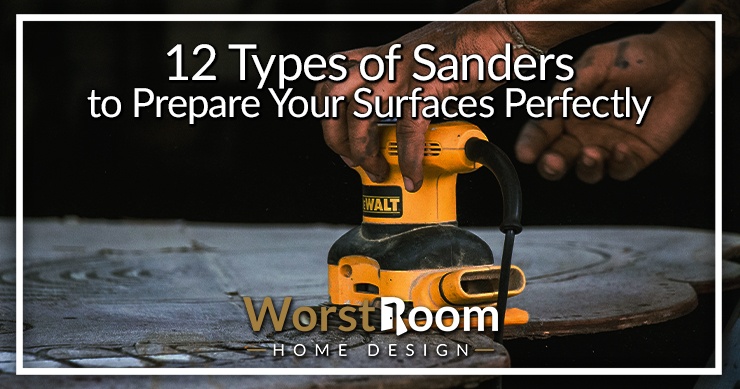
You've just finished your pet project and want the surface to be as smooth and as professional looking as possible—the job gets easy when you have the right types of sanders in your arsenal of tools.
Manual or electric, expensive or cheap, for your hobbies or for professional work, there’s a range of sanders out there to give you the finish you’re looking for.
12 Types of Sanders
If you’re wondering which sander is the best option to give your brand new hand-built drawer a professional-quality finish, here’s a list of the different types of sanders available in the market.
Detail Sanders
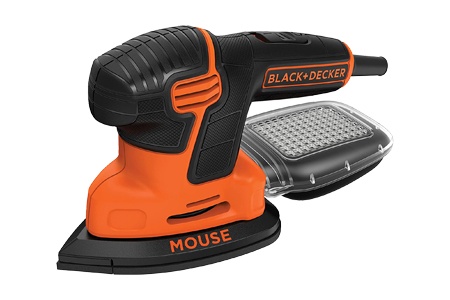
Also known as triangle, mouse, or corner sanders, detail sanders resemble iron boxes more than they do a sander.
These sanders have a family in the form of orbital sanders and are often considered a variant of the triangular pads with their special sandpaper that’s self-adhesive.
Detail sanders come with numerous attachments that make precise, specialized work possible—hence the name.
With their unique shape, they’re able to reach nooks and crannies that normal sanders can’t. Therefore, detail sanders are the preferred option for tight spaces and corners, as well as odd shapes.
Orbital Sanders
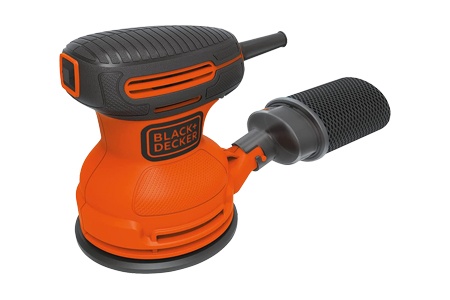
Orbital sanders go by many names—pad sander, finishing sander, palm sander, rotary sander, circular sander, vibrating sander, quarter-sheet sander and sheet sander. These compact tools can be used one handed and are extremely easy to handle.
In fact, they get the name ‘quarter-sheet sander’ as they use only one-fourth of a standard 9 x 11-inch sandpaper sheet.
This paper is applied to the surface for sanding with the help of two spring-loaded clamps. The other nicknames come from the tiny circular orbits that the sanding pad vibrates in.
Orbital sanders are also called finishing sanders since they’re great for ultra-detailed work, such as rounding sharp edges, removing putty and creating a surface that’s super smooth.
The benefit of an orbital sander over other types is the speed at which they work. They can perform 10,000 orbits per minute, a rate which you could never match by hand or with a basic spinning sander (without risking much other negatives).
Lightweight and gentle, this sander won’t help you much with a heavy removal project but ensures that there is minimal risk of damage to your light project.
Disc Sanders
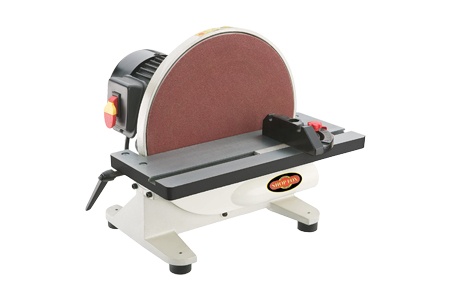
Disc sanders are unique types of sanders; though they do exist in table-mounted form, they’re more popular as attachments for certain types of drills. These round discs, once added to the end of a power drill, spin to sand.
In the mounted version, you’ll find a wheel instead of a disc—this gives them more surface area. Depending on the job, you can apply various grit sizes to these sanders.
The rotational speed of the disc makes it better to use these sanders as handheld tools, making quick, smooth work of large areas.
The stationary version of the sander can be used on wood, metal and plastic and even comes with an adjustable surface that makes angled work easy.
Belt Sanders
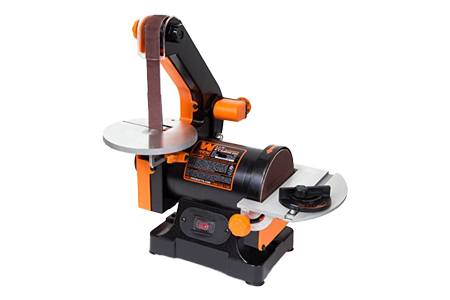
Belt sanders are built with two drums and a sanding belt wrapped around these two drums, of which the front drum moves freely and the rear drum is motorized. These sanders are staples in most modern workshops and garages.
A quick change is possible with these sander types thanks to a tension release level. Most models even come with tracking adjustment knobs that keep the belt centered.
Belt sanders are available in four common sizes (belt sizes). The smallest is 3 x 18 inches and is the easiest to control. It’s also the best size if you’re just starting out.
The 3 x 21 inches is the next biggest and while a little harder to handle, is great for balance, speed and power. This makes it the most popular size.
The 3 x 24 inches sander covers a large surface area and is generally less stable. The 4 x 24 inches is the biggest, designed for experienced users and a juggernaut to handle. However, this sander makes quick work of large, flat surfaces.
Belt sanders are the ideal option when you want to remove an older layer of paint or varnish from wooden surfaces. Because they're stationary, a belt sander can be safer in that you're manipulating the object you're sanding instead of the mechanical device. There are risks if you don't do proper maintenance but for sanding objects instead of items like floors, they're hard to beat.
You can even sand multiple boards clamped together, in a process known as ‘gang sanding’, with a belt sander—this achieves smooth edges in the planks.
Belt sanders are extremely common in commercial units for their power and control. This also makes these types of sanders a necessity in making furniture and other woodwork projects. To prevent scratches, always follow the grain, no matter the types of wood grain patterns you're working with.
File Sanders
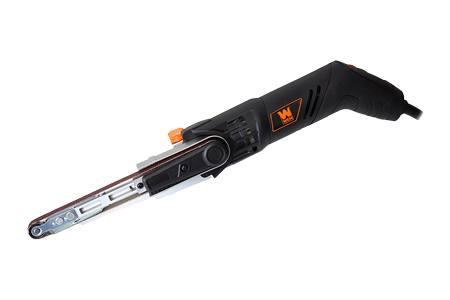
File sanders feature extremely narrow belts—a feature that lets them fit easily into tiny spaces.
These sanders can be either air or electricity powered and are great for detail work—they’re commonly used in auto body repairs to reach areas that regular sandpaper fails to reach. File sanders are even used in garage floor crack repair.
Drywall Sanders
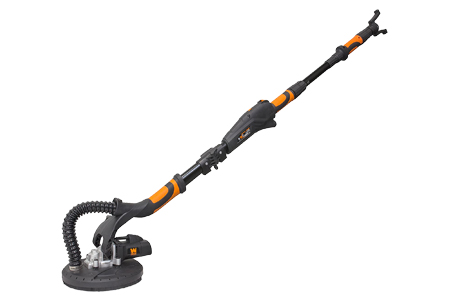
Drywall sanders resemble metal detectors—disc sanders attached to a long pole. To enable close-up work, a handle is fitted near the hub.
Most pole sander models even come with types of vacuums on them to collect dust particles. Drywall sanders are the preferred option when you want to remove excess adhesive or smooth surfaces across all types of drywall.
Due to their long reach, these sanders are also great for ceilings and other places where you would require a ladder to reach.
Drum Sander
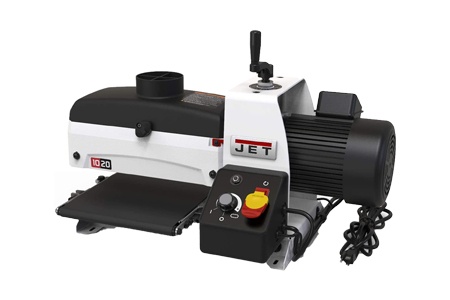
These aren't the kinds of sanders you'd have in your garage at home, but if you're on a professional crew that refinishes floors, a floor drum sander cannot be beat.
You have to be very careful how you use these types of sanders. You can't let them linger on any spot or you'll burn or gouge a hole on the hardwood floor.
You have to continue pushing them along, and hold on tight so it doesn't get away from you, because they propel themselves a bit.
These can be used to remove top coats, polyurethane, sand below the previous coat of stain, remove paint, remove paint alternatives, and much more. There are random orbital sander versions as well that are even harder to control, though.
Oscillating Spindle Sander
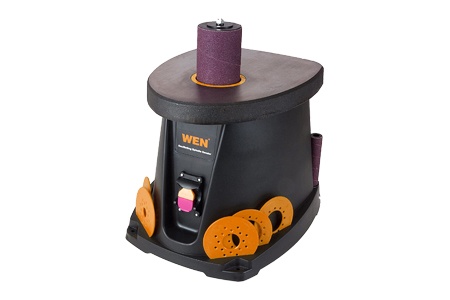
Oscillating spindle sanders (OSS) are a part of the drum family. These mounted sanders feature a protruding sanding drum (protruding from the freestanding table or benchtop).
The drum is also raised and lowered, as the sander runs, on its spindle. This allows the wooden surface to come into contact with the entire drum. This ensures that grooves are eliminated and reduces any wear on the drum through even distribution.
Oscillating spindle sander types come in varying drum sizes. Benchtop models have four-inch-tall drums, generally, with the diameter size ranging from half an inch to two. Freestanding tables have 4-inch drums with at least 4 inches in diameter.
Some models even have the option of adding on an option that lets you turn the drum into a belt sander. OSS is commonly used to smooth the edges of boards.
Many of the larger models can angle in front of the table by up to 45 degrees—this lets you create beveled edges.
The drum’s vertical design lets you work well on curved surfaces that band saws and other types of saws create—all while being able to efficiently sand straight lengths.
Edging Sander
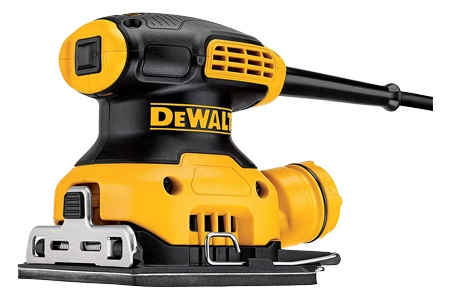
An edging sander, like a drum sander, are types of sanders that are used on floors. They're a type of disc (or disk) sander meant to help you sand along the edges of a floor, like along baseboards and in corners.
These are bigger than most handheld sanders but are still vastly smaller than a drum sander. They aren't difficult to use but as always, don't linger in any one spot for too long.
Random Orbital Sanders
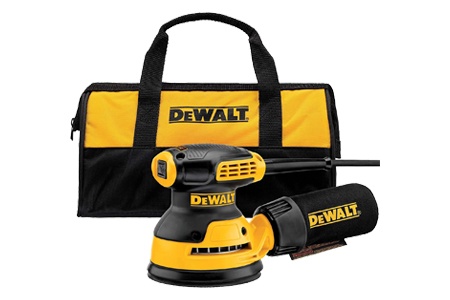
Also known as dual action sanders, random orbital sanders are similar to orbital sanders, except that they feature a round pad instead of a square pad.
This round pad, along with the small circular orbits that are already available in orbital sanders, spins in circles to sand the surface.
This also results in the typical swirl pattern, generally left behind by regular orbital sanders, being eliminated.
The pad can be either 5 or 6 inches in diameter and may use a pressure-sensitive adhesive (PSA) disc with a surface similar to Velcro, depending on the model. You also get D-handle and barrel-grip variants, with the most popular design available with a single-handed palm grip.
Random orbital sanders are all rounders, great for a ton of activities. These types of sanders can easily perform the work of both orbital and belt sanders, even if it does do a less efficient job.
This makes random orbital sanders a common feature in many workshops and is the preferred choice when you’re on a tight budget, owing to their versatility.
Random orbital polishers are designed similarly and are also used for auto-detailing.
Sanding Blocks
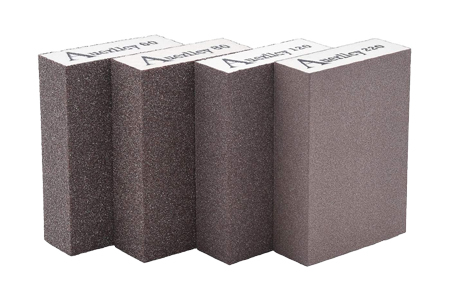
Sanding blocks are manual sanders and therefore, don’t require any power—except your muscle power. These sanders have a surface where you can attach sandpaper complemented by a grip or handle surface.
Some models have grips that are similar to hand saws, a simple bar handle, an ergonomic pal surface and a solid block. Foam sanding blocks are among the most popular sanding blocks in use.
Sanding blocks have been used since times immemorial and are still in use today for their cost effectiveness, simplicity, compact sizes and efficiency, finding a place in craft kits and toolboxes alike.
While handling them takes some amount of skill and getting used to—at least if you’re aiming for the best finish—these sander types are much easier to control than most electric sanders.
Table Sanders
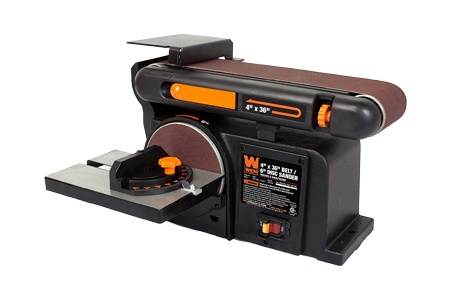
Table sanders, also known as bench sanders, are stationary belt sanders with a disc sander. These sanders are powerful and big, which makes them popular in industries, factories and woodworking studios.
Sanders with taut belts are the most commonly used, though some models, with more slack in the belt for better control, are preferred in certain woodworking industries.
Table sanders, due to their power, are not the preferred option for precise results, but are great for larger materials. Slack belts are also extremely popular in making guitars, giving you a smooth finish when paired with fine-grit paper.
Types of Sanders for Every Project
As you can see, there are many different types of sanders out there, each one satisfying a particular need. This isn't even an exhaustive list - you can find all kinds of sub-types for every niche use out there. A sander is a great addition to any toolbox, so investing in one is a completely wise option.



